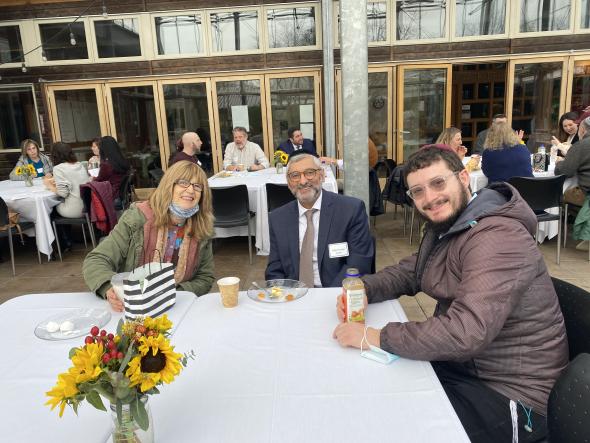As the leading funders of Jewish day school education in Seattle, we at the Samis Foundation take the challenge of enrollment very seriously, especially because our community has experienced some of the lowest per capita enrollment rates in the country in recent years. In 2020, we embarked on a research initiative to understand declining enrollment better and learn new strategies from schools and communities that have successfully turned their enrollment rates around.
Along with the two well-documented success strategies of improving quality and increasing affordability, there is a third strategy that is showing great promise. That strategy is one of collaboration and relationship-building among schools, even ones that think of themselves as competing for the same students. In this article, I will explain what we learned about this collaboration as a key part of our day school enrollment strategy, how we are implementing it in the Seattle area and what preliminary results have been achieved.
Collaboration as a driver of enrollment
Collaboration is not an obvious strategy for driving enrollment. So why and how does it work? The research we conducted uncovered data showing that schools that successfully turned around declining enrollment trends did it by taking a multipart approach, with quality and affordability being two key factors, but with collaboration being an important third part of the puzzle for some communities. Departing families frequently cite lack of critical mass as a key reason for leaving day schools. Collaboration among schools creates the critical mass and vitality families want through shared resources and programming.
The impact of collaboration was particularly profound in Europe, where school communities took a communitywide approach to building strong day schools. We were fortunate to connect with Rabbi Josh Spinner, the executive vice president and CEO of The Ronald S. Lauder Foundation, and Kate Goldberg, the CEO of the Maurice and Vivienne Wohl Legacy Foundation based in London, to learn about the approach of Educating for Impact in Europe, which is supported by a number of foundations. Spinner and Goldberg explained that in Jewish day schools from Finland to Spain, engaging community leaders in developing vision and strategy for creating a healthy Jewish education ecosystem was a powerful catalyst to vitality and growth.
Collaboration at the community level
In the past, Samis focused on increasing collaboration by supporting relationship-building activities among heads of schools. This wasn’t wrong, but it wasn't enough. So, beginning in 2021, we established a forum to bring together heads of schools and lay leaders with the goal of sharing our communal responsibility and crowdsourcing solutions to issues of declining enrollment along with other challenges schools commonly face.
This forum facilitated discussion and served to overcome obstacles and promote the power of working collaboratively to solve problems and reach objectives. Instead of making ourselves and the school leadership solely responsible for figuring out how to create educational vitality and sustainable enrollment, we gathered the minds of the community and gave them a forum for ideation and action planning.
This forum, called Let’s Grow Enrollment, brought together lay and professional leaders from across the Seattle area to break down the silos among schools and develop dynamic approaches.
A day of magic
An entire day was set aside at a beautiful local retreat center. All the local day schools participated, and Rabbi Josh Spinner gave the charge: small community, big opportunity, and work together to double day school enrollment in Seattle in five years. It was an “If you dream it, they will come” moment. The day was carefully scripted to mix the day school participants with a facilitator to identify and remove obstacles, promote opportunity and report back to the whole group.






